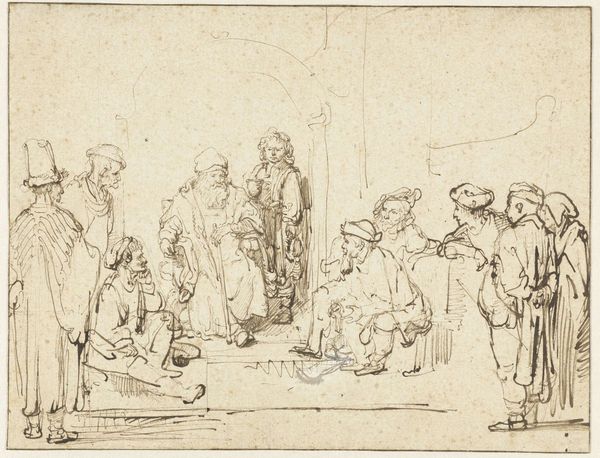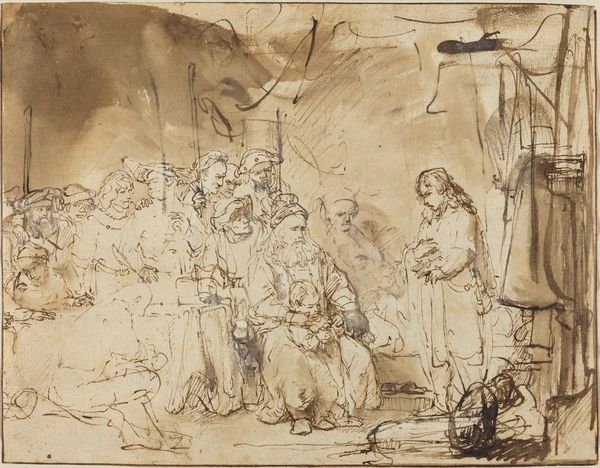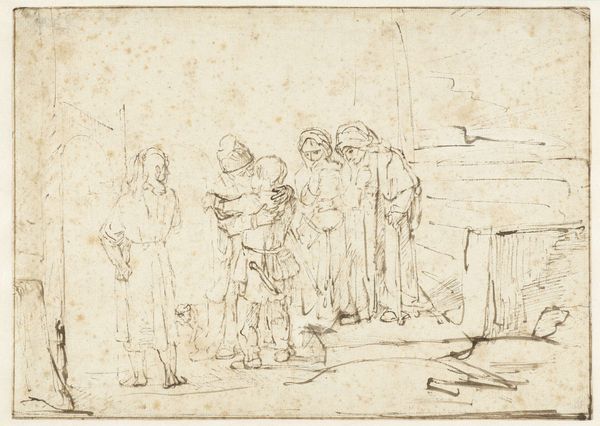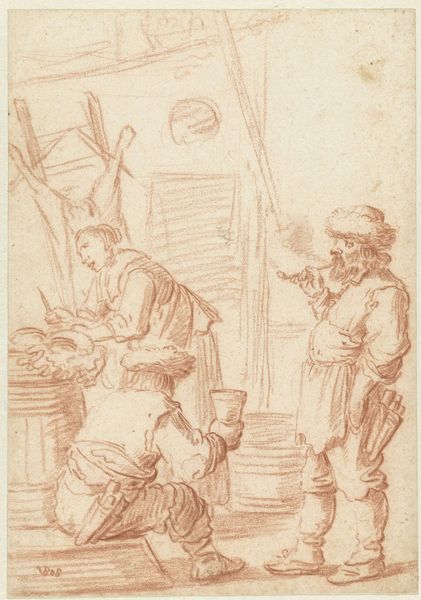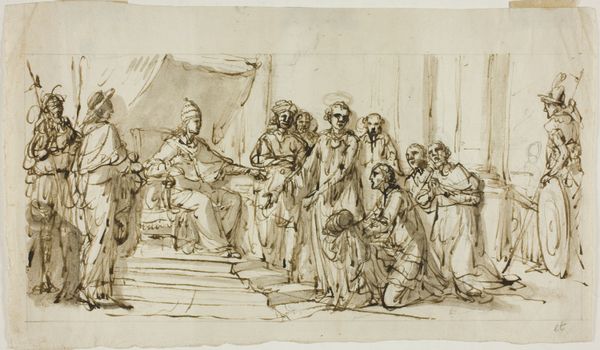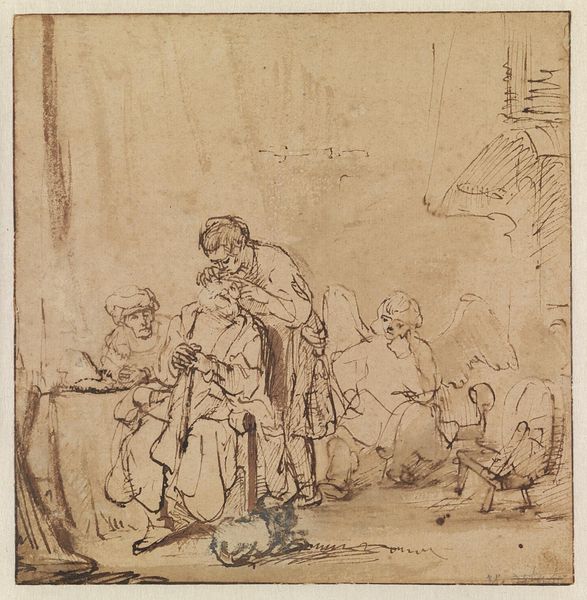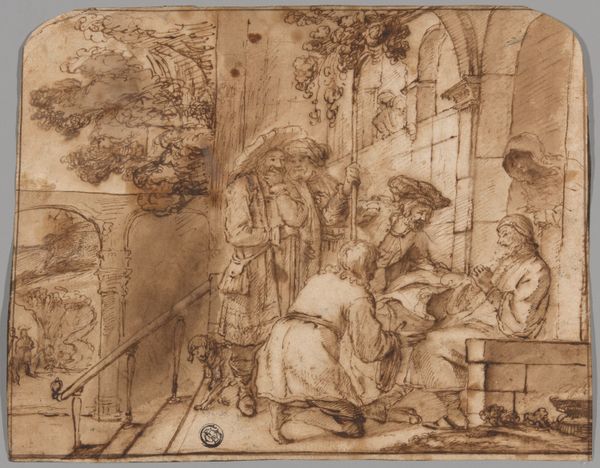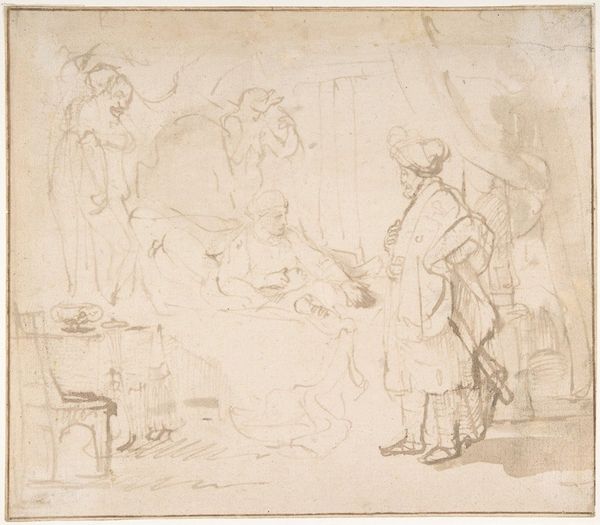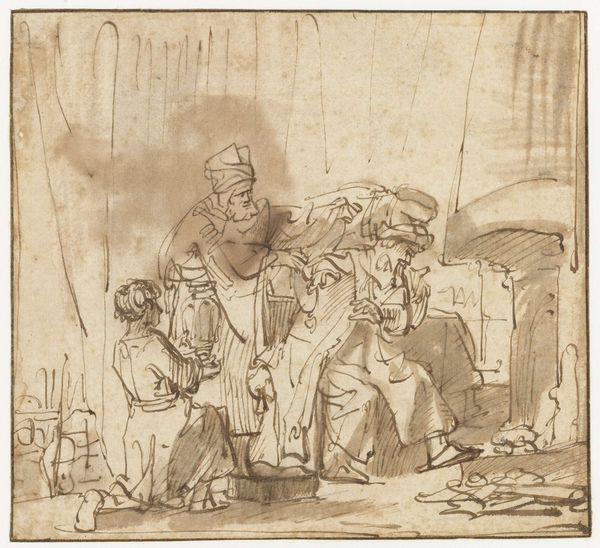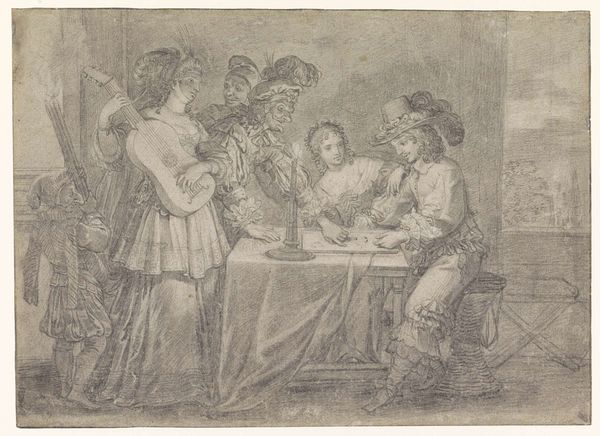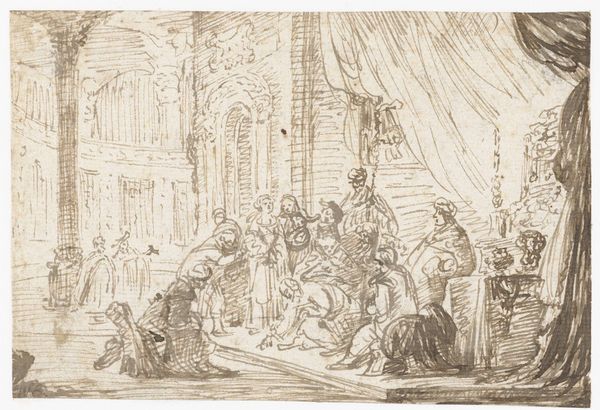
drawing, paper, ink
#
drawing
#
narrative-art
#
baroque
#
etching
#
figuration
#
paper
#
ink
#
history-painting
Dimensions: height 161 mm, width 218 mm
Copyright: Rijks Museum: Open Domain
Curator: Here we have "The Roman Centurion Cornelius Sending his Men to Joppa," a drawing attributed to Willem Drost, created around 1653. It’s rendered in ink on paper. Editor: It’s all very… brown. The artist clearly prioritizes capturing dynamic posture and composition with fluid strokes, though, which lends it immediacy despite the restricted palette. Curator: Exactly. And the choice of medium, ink on paper, speaks volumes about its likely purpose – perhaps a preparatory sketch or a study. The fast, economical lines allowed Drost to quickly visualize and refine his ideas, reflecting a work-in-progress stage focused on efficiency. Editor: Agreed. I'm captivated by how the simple lines construct weight and shadow. Note the density of the hatching under the table and how it gives form to the drapery. Even though the background fades, the architectural details hint at depth without committing to precise detail. Curator: And consider the social and economic conditions underpinning the creation of such drawings. Paper production, the accessibility of ink – these determined who could participate in image making. Patronage also shaped these narratives from the bible, reflecting societal values. Editor: Undoubtedly. The cultural values emerge, certainly, in the somewhat ambiguous figuration. Look at Cornelius, in his turban, as opposed to the western garbed figures. Drost appears to emphasize a clash of civilizations and possibly trade relations. Curator: The figures' clothing provides insight into costume practices of the era, and perhaps more immediately highlights wealth. Labor shapes their presentation—note that the quality of the textiles they’re wearing surely comes from many artisans’ hands. Editor: It’s remarkable how much expressive depth he manages. While his linework is undoubtedly baroque, the ink conveys mood without superfluous drama or color—just line and tonal relationships in their purest form, which almost anticipates abstraction. Curator: Drost’s method gives us insight into studio practice as well. Considering materiality directs our focus away from the subject matter and invites consideration about the working process and the resources needed to communicate biblical scenes to seventeenth-century audiences. Editor: Precisely. It makes me reconsider the role that texture plays and allows us to read past narrative. Thank you for drawing my attention back to Drost’s material reality. Curator: A final point of contemplation for our listeners—art is inherently contextual. As consumers, we actively interpret and derive meaning influenced by available information. I am glad to have reevaluated with you the role material has on interpreting art's message.
Comments
No comments
Be the first to comment and join the conversation on the ultimate creative platform.
